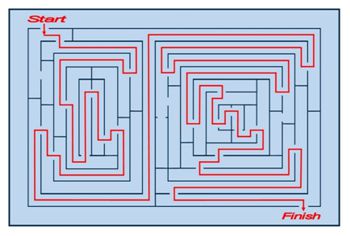Manageria
» July 2025
» Jan 2025
» July 2024
» Jan 2024
» July 2023
» Jan 2023
» Oct 2022
» July 2022
» Apr 2022
» Jan 2022
» Oct 2021
» July 2021
» Apr 2021
» Jan 2021
» Oct 2020


Add To What You Know (1)
Prepared by: "Optimanage.com" Team
What is a Control Process?
It is a sequential set of actions taken by management to:- Establish performance standards
- Measure performance
- Evaluate performance
- Take corrective steps when needed and indicated
- Take corrective steps where needed and indicated
Behavioral Controls
They are actions performed by management to:- Specify, evaluate and correct performance of personnel.
- Develop and evaluate performance appraisal methods and techniques.
- Develop and evaluate techniques for production and operations planning.
Group Dynamics
- Formal groups:
- » They have the sanction of the organization.
» They have legitimate power in the organization.
» They are formed to perform a specific task or function. - Informal groups:
- » They are not sanctioned officially by the organization.
- Unofficial Organization:
- » It is made up of Informal groups.
Communication in Management
The Elements of Communication include:- Sender:
- » The originator of a message (stimulus).
- Receiver:
- » The person that receives the message (the stimulus).
- Noise:
- » It is anything that interferes with or changes the message. It is not part of either the sender or receiver.
- Encoding:
- » The action that starts the communication process.
- Decoding:
- » It is the process of understanding the message.
- Filtering:
- » It is the act of changing the message as it passes through the different personalities of the sender or the receiver. Filters are part of either the sender or the receiver.
- Denotative meaning:
- » It is the explicit definition of a term.
- Connotative meaning:
- » It is the meaning of the term by association
- Common vocabulary:
- » They are words that formally acquired defined meanings accepted by an organization or a group to facilitate communication by limiting the connotative meanings of these words.
Change in the Organization
It is the transformational process in the organization or in the group where a set of behaviors are altered to another set of behaviors. Such a transformation could be implemented in a planned, systematic or random manner.Break-Even Analysis
Break-Even Analysis is a term used in Production and Operations Management (POM). It is a managerial technique used in planning to determine the minimum number of units of sales required to pay the total costs of producing and selling a product. This minimum number is known as the Break-Even Quantity (BEQ). Determining the BEQ uses Fixed and Variable Costs as well as the Piece of the product.References:
(1) Patrick J. Montana and Bruce H. Charnov, "Management", Business Review Books, Third Edition, Baron’s (2000).





